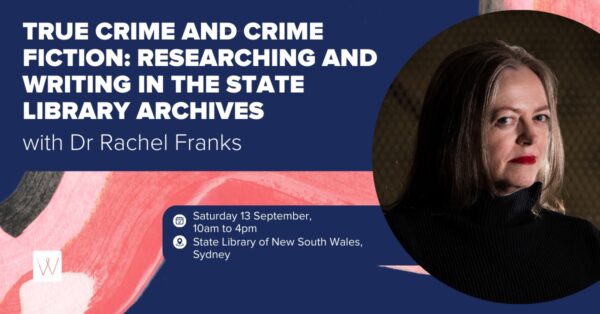
How should budding true crime and crime fiction writers avoid ‘dumping’ all their research onto the page?
It can be tempting to share all the labours of your research with your readers; all those hours given to chasing various lines of thought, getting lost down rabbit holes, finding the almost-perfect “interesting fact”.
In writing up a crime story – fact or fiction – I always start by creating a very basic timeline that is clear and succinct. Then, I will layer additional material until that line becomes something more compelling than a series of key events on a calendar. It’s like starting with a skeleton and then slowly adding muscle and flesh and everything else that makes us human.
One of the hardest things when writing crime stories is to “just tell the story”. Background, context, description are all important but can be a little bit too alluring. It’s easy, as writers, to be caught up in all that work that lifts a timeline: crime – investigation – resolution. We can see everything as a crucial component of the story, but we risk losing the central narrative when we force too much on a page.
If you felt overwhelmed while doing your background research, then your reader will almost certainly feel the same way if they also have to trawl through everything you found. And remember that nothing is wasted. Even if something is not clearly articulated, all the research helps you avoid putting mistakes into print.
Is there a tangible difference between going digging in the physical archives and researching online? And do technological advancements such as generative AI enhance or diminish the researching experience?
I much prefer working with physical records than with digitised materials if I’m looking at diaries or letters or anything that has a personal element to it. There’s real magic in touching something that – precious or perfunctory – has a deep connection to the story you’re writing. A piece of paper that was scribbled on, was kept, tucked away, added to, sometimes scrunched up, occasionally with a coffee stain. These slips of evidence contribute to larger stories, and they often hold their own micro-stories as well. It’s like holding someone’s hand.
In looking for the big patterns around a crime event or trying to establish context for a story, then online tools are essential. I do a lot of research using newspapers, making resources such as Trove (hosted by the National Library of Australia) critical to my work. Databases, provided by libraries, are also important in following up on how some of the more scientific or technical aspects of a crime did, or might, unfold.
How do you balance writing convincingly with writing engagingly?
Why is crime writing so enduringly popular amongst readers? Is there something prurient about our insatiable appetite for true crime?
Another essential, but often overlooked, lesson from crime writers is the way they document efforts to redefine some “criminal” behaviours. Over recent decades, for example, we have seen the decriminalisation in many countries of homosexuality alongside the re-criminalisation in some places of abortion. True crime stories help us to track these changes that can also offer rich material to those producing crime fiction.
Dr Rachel Franks is the Coordinator of Scholarship at the State Library of New South Wales and an Honorary Associate Lecturer at the University of Newcastle. She holds PhDs in Australian crime fiction (Central Queensland University) and in true crime texts (University of Sydney). A qualified educator and librarian, her extensive work on crime fiction, true crime, popular culture and information science has been presented at numerous conferences as well as on radio and television. An award-winning writer, her research can be found in a wide variety of books, journals, magazines and online resources. She is the author of An Uncommon Hangman: The Life and Deaths of Robert ‘Nosey Bob’ Howard (2022).
Join Dr Rachel Franks for her course, True Crime and Crime Fiction: Researching and Writing in the State Library Archives, Saturday 13 September 2025, 10am-4pm at the State Library of NSW.

If you want to be the first to read great advice, prompts and inspiration from our incredible tutors, subscribe to our weekly e-newsletter Newsbite.
More from Writing NSW
Check out our full range of writing courses in Sydney, our online writing courses and our feedback programs to see how we can help you on your creative writing journey. Find out about our grants and prizes, as well as writing groups across NSW, and sign up to our weekly newsletter for writing events, opportunities and giveaways.
